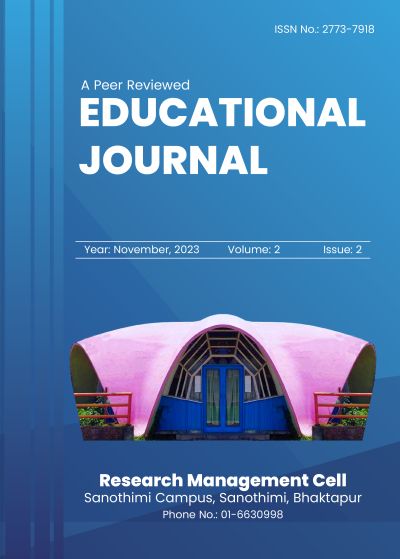Urbanization Trend in Nepal
DOI:
https://doi.org/10.3126/ej.v2i2.61734Keywords:
Urban Center, Urban Population, Province, Ecological Zone, Urbanization, MunicipalitiesAbstract
Nepal is a small and landlocked country, situated between Tibet (China) to its north, and India to its east, west and south. It is covered an area 26°22′ -30°27′ latitude and 80°4-′ 88°12′ longitude It is part of Asia and the northern hemisphere. There are two types of settlements in Nepal i.e. Urban and Rural settlements. Urbanization is the population shift from rural to urban areas, the decrease in the proportion of people living in rural areas, and change their ways of livelihood style.
Since the industrial revolution in the late 18th century, the urbanization process was led in England and then followed by many other countries. This paper has been written based on secondary / library data. Urbanization process is rapidly increasing in Nepal. In fifth scientific population census there were only 10 urban places with 2.9 percentage. Again, the criteria of municipality also gradually changed from1952/54 to 2017. At a present time there are 293 municipalities including 6 metropolis municipalities and 11 sub- metropolis areas. After the implemented the new constitution 2072, the country is restructuring and divided 7 province. But there has not equally distribution the population due to the infrastructure development and difficulties of geographical condition. The highest 71.9 percentage and lowest49.3 percentage respectively live in Province -2 and Karnali Pradesh (6). According to ecological region, there is no equal distribution of municipality. The highest municipality (109) and lowest municipality (15) are terai region and mountain region respectively.
It concluded that the urban population is rapidly increased but province wise such urban places/ municipalities are different. Especially terai is the highest municipalities/ urban centre due to development facilities.




